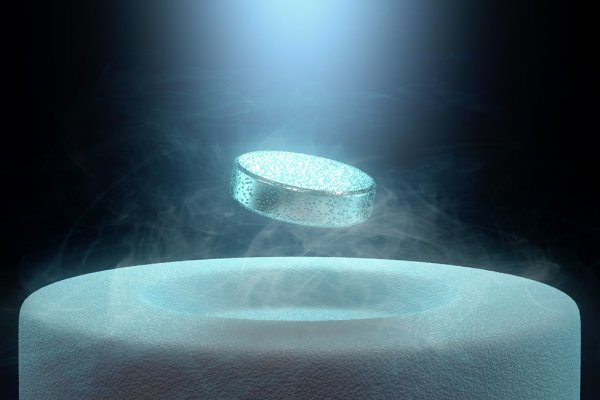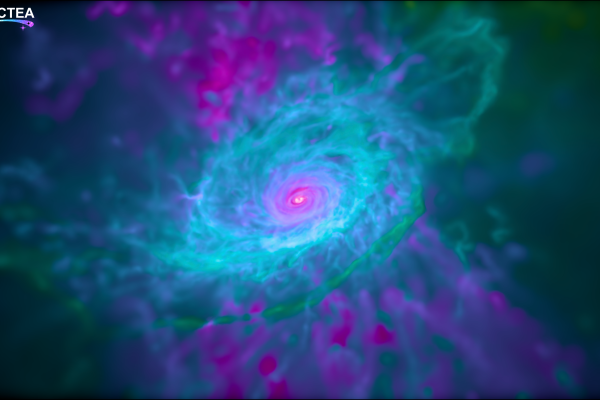A team of scientists led by Ataç Imamoğlu and Eugene Demler from ETH in Zurich and with the collaboration of Ivan Morera of the Institute of Cosmos Sciences of the University of Barcelona (ICCUB) have discovered a new mechanism to produce magnetization in materials, which is completely different from the old magnetism that we are used to. They recently published their results in Nature.
Imamoğlu’s laboratory produced a special material (known as a Moiré material) by putting atomically thin layers of two different semiconductor materials (molybdenum diselenide and tungsten disulfide) on top of each other. These materials provide a very high degree of tunability, making them the perfect candidates for the research of quantum effects.

Striking evidence
By cooling the system down to a temperature close to absolute zero and steadily increasing the voltage, the physicists filled the material with electrons and measured the corresponding magnetization, but for a few electrons the material remained paramagnetic. As the researchers kept adding electrons to the lattice, something unexpected happened: the material suddenly behaved very much like a ferromagnet.
“That was striking evidence for a new type of magnetism that cannot be explained by the exchange interaction”, Imamoğlu says. In fact, if the exchange interaction were responsible for the magnetism, that should have shown up also with fewer electrons in the lattice. The sudden onset, therefore, pointed towards a different effect.
Kinetic magnetism
Eugene Demler, in collaboration with then ICCUB predoctoral researcher Ivan Morera, finally had the crucial idea: they could be looking at a mechanism which the Japanese physicist Yosuke Nagaoka had theoretically predicated as early as 1966.
The researchers produced a theoretical model to simulate this bidimensional material during Dr. Morera's PhD with the Many-Body Quantum Physics group of the UB and the results produced agreed very well with the experimental observations, which made this the very first observation of this effect in an extended solid-state system.
Nagaoka Ferromagnetism
To understand Nagaoka’s prediction, picture the simple mechanical children’s game called the sliding puzzle. This puzzle consists of a four-by-four grid of tiles, with a single empty slot to allow the tiles to slide around to solve the puzzle. Next, think of the Nagaoka magnet as a similar two-dimensional square lattice, where each tile is an electron. The electrons then behave like the tiles in the children’s game, shuffling around in the lattice.
Ilustration of Nagaoka ferromagnetism. Credit: Scixel for QuTech
If the electron spins are not aligned (each tile has an arrow pointing in a different direction in our analogy) then the electrons will form a different combination after every shuffle. In contrast, if all the electrons spins are all pointing in the same direction, the puzzle always tends to remain unchanged, no matter how the electrons are shuffled. Nagaoka found that alignment of electron spins results in a lower energy of the system. As a consequence, the system of a square 2D lattice which has one missing electron will naturally prefer to be in a state in which all electron spins are aligned – a Nagaoka ferromagnetic state.
'The observation of Nagaoka's ferromagnetism in a two-dimensional moiré material highlights the potential of these systems for studying quantum many-body effects in a controlled manner”, says Dr. Morera.
“Up to now, such mechanisms for kinetic magnetism have only been detected in model systems, for example in four coupled quantum dots”, says Imamoğlu, “but never in extended solid state systems like the one we use.”
As a next step, the team wants to change the parameters of the moiré lattice in order to investigate whether the ferromagnetism is preserved for higher temperatures; in the current experiment that material still had to be cooled down to a tenth of a degree above absolute zero.
Reference
Ciorciaro L, Smolenski T, Morera I, et al. Kinetic Magnetism in Triangular Moire Materials, Nature (2023), doi: external page10.1038/s41586- 023-06633-0



